|

On eBay Now...
1853 illustrated newspaper w THE CHARGE OF THE LIGHT BRIGADE during CRIMEAN WAR For Sale

When you click on links to various merchants on this site and make a purchase, this can result in this site earning a commission. Affiliate programs and affiliations include, but are not limited to, the eBay Partner Network.

1853 illustrated newspaper w THE CHARGE OF THE LIGHT BRIGADE during CRIMEAN WAR:
$40.00
1853 illustrated newspaper w THE CHARGE OF THE LIGHT BRIGADE during CRIMEAN WAR
1853 illustrated newspaper with engravings & text describing THE CHARGE OF THE LIGHT BRIGADE during THE CRIMEAN WAR- inv # 3A-408 Please visit our store for THOUSANDS MORE HISTORICAL NEWSPAPERS for SALE or at sale SEE PHOTO(s) - COMPLETE ORIGINALillustrated NEWSPAPER,the ILLUSTRATED LONDONNEWS (England)datedNov 18, 1854.This original illustrated newspaper contains afront page detailed engraving and 3 columns of textdescribing \"THE CHARGE OF THE LIGHT BRIGADE\" by British Light Cavalry during the CRIMEAN WAR. The Charge of the Light Brigade was a military action undertaken by British light cavalry against Russian forces during the Battle of Balaclava in the Crimean War, resulting in many casualties to the cavalry. On 25 October 1854, the Light Brigade, led by Lord Cardigan, mounted a frontal assault against a Russian artillery battery which was well prepared with excellent fields of defensive fire. The charge was the result of a misunderstood order from the commander in chief, Lord Raglan, who had intended the Light Brigade to attack a different objective for which light cavalry was better suited, to prevent the Russians from removing captured guns from overrun Turkish positions. The Light Brigade made its charge under withering direct fire and reached its target, scattering some of the gunners, but was forced to retreat immediately.
The events were the subject of Alfred, Lord Tennyson\'s narrative poem \"The Charge of the Light Brigade\" (1854), published six weeks after the event. Its lines emphasise the valour of the cavalry in carrying out their orders regardless of the risk. Responsibility for the miscommunication is disputed, as the order was vague and Captain Louis Nolan, who delivered the written orders with some oral interpretation, was killed in the first minute of the assault.
The brigade was not completely destroyed, but did suffer terribly, with 118 men killed, 127 wounded, and about 60 taken prisoner.[20] After regrouping, only 195 men were still with horses. The futility of the action and its reckless bravery prompted the French Marshal Pierre Bosquet to state: \"C\'est magnifique, mais ce n\'est pas la guerre.\" (\"It is magnificent, but it is not war.\") He continued, in a rarely quoted phrase: \"C\'est de la folie\" — \"It is madness.\" The Russian commanders are said to have initially believed that the British soldiers must have been drunk.[18] Somerset Calthorpe, the aide-de-camp to Lord Raglan, wrote a letter to a friend three days after the charge. He detailed casualty numbers but did not distinguish between those killed and those taken prisoner:
Killed and missing.Wounded.
9Officers12
14Sergeants9
4Trumpeters3
129Rank and file98
156Total122
278 casualties;
— besides 335 horses killed in action, or obliged afterwards to be destroyed from wounds. It has since been ascertained that the Russians made a good many prisoners; the exact number is not yet known.
The reputation of the British cavalry was significantly enhanced as a result of the charge, though the same cannot be said for their commanders.
Slow communications meant that news of the disaster did not reach the British public until three weeks after the action. The British commanders\' dispatches from the front were published in an extraordinary edition of the London Gazette of 12 November 1854. Raglan blamed Lucan for the charge, claiming that \"from some misconception of the order to advance, the Lieutenant-General (Lucan) considered that he was bound to attack at all hazards, and he accordingly ordered Major-General the Earl of Cardigan to move forward with the Light Brigade.\" Lucan was furious at being made a scapegoat: Raglan claimed he should have exercised his discretion, but throughout the campaign up to that date Lucan considered Raglan had allowed him no independence at all and required that his orders be followed to the letter. Cardigan, who had merely obeyed orders, blamed Lucan for giving those orders. Cardigan returned home a hero and was promoted to Inspector General of the Cavalry.
Lucan attempted to publish a letter refuting point by point Raglan\'s London Gazette dispatch, but his criticism of his superior was not tolerated, and Lucan was recalled to England in March 1855. The Charge of the Light Brigade became a subject of considerable controversy and public dispute on his return. He strongly rejected Raglan\'s version of events, calling it \"an imputation reflecting seriously on my professional character.\" In an exchange of public correspondence printed in the pages of The Times, Lucan blamed Raglan and his deceased aide-de-camp Captain Nolan, who had been the actual deliverer of the disputed order. Lucan subsequently defended himself with a speech in the House of Lords on 2 March.
Lucan evidently escaped blame for the charge, as he was made a member of the Order of the Bath in July of that same year. Although he never again saw active duty, he reached the rank of general in 1865 and was made a field marshal in the year before his death.
The charge continues to be studied by modern military historians and students as an example of what can go wrong when accurate military intelligence is lacking and orders are unclear. Prime Minister Winston Churchill, who was a keen military historian and a former cavalryman, insisted on taking time out during the Yalta Conference in 1945 to see the battlefield for himself.
One research project used a mathematical model to examine how the charge might have turned out if conducted differently. The analysis suggested that a charge toward the redoubt on the Causeway Heights, as Raglan had apparently intended, would have led to even higher British casualties. By contrast, the charge might have succeeded if the Heavy Brigade had accompanied the Light Brigade along the valley, as Lucan had initially directed.
According to Norman Dixon, 19th-century accounts of the charge tended to focus on the bravery and glory of the cavalrymen, much more than the military blunders involved, with the perverse effect that it \"did much to strengthen those very forms of tradition which put such an incapacitating stranglehold on military endeavor for the next eighty or so years,\" i.e., until after World War I.
The Illustrated London News, founded by Herbert Ingram and first published on Saturday 14 May 1842, was the world\'s first illustrated weekly newspaper / news magazine. The magazine was published weekly for most of its existence.
Photographic and printing techniques were advancing in the later years of the 19th century, and The Illustrated London News began to introduce photos and artwork into its depictions of weekly events. From about 1890, The Illustrated London News made increasing use of photography. The tradition of graphic illustrations continued, however, until the end of World War I. Often, rough sketches of distant events with handwritten explanations were supplied by observers and then worked on by artists in London to produce polished end products for publication. This was particularly the case where popular subjects such as colonial or foreign military campaigns did not lend themselves to clear illustration using the limited camera technology of the period. By the 1920s and 1930s, the pictures that dominated each issue of the magazine were almost exclusively photographic, although artists might still be used to illustrate in pictorial form topics such as budgetary expenditure or the layout of coal mines. Very good condition. This listing includes thecomplete entire original illustrated newspaper, NOT just a clipping or a page of it. STEPHEN A. GOLDMAN HISTORICAL NEWSPAPERS stands behind all of the items that we sell with a no questions asked, money back guarantee. Every item we sell is an original newspaper printed on the date indicated at the beginning of its description. U.S. buyers paypriority mail postage which includes waterproof plastic and a heavy cardboard flat to protect the purchased itemfrom damage in the mail. Uponrequest by the buyer, we can ship by USPS Media Mail to reduce postage cost; however, please be aware that USPS Media Mailcanbe very slow in its time of transit to the buyer.International postage is quoted when we are informed as to where the package is to be sent. We do combine postage (to reduce postage costs) for multiple purchases sent in the same package. We list thousands of rare newspapers with dates from 1570 through 2004 on each week. This is truly SIX CENTURIES OF HISTORY that YOU CAN OWN! Stephen A. Goldman Historical Newspapers has been in the business of buying and selling historical newspapers for over 50 years. Dr. Goldman is a consultant to the Freedom Forum Newseum and a member of the American Antiquarian Society. You can buy with confidence from us, knowing that we stand behind all of our historical items with a 100% money back guarantee. Let our 50+ years of experience work for YOU ! We have hundreds of thousands of historical newspapers (and their very early precursors) for sale.
Stephen A. Goldman Historical Newspapershas been in the business of buying and selling historical newspapers for over 50 years. We are located in the charming Maryland Eastern Shore town of OXFORD, Maryland.
Dr. Goldman is a consultant to the Freedom Forum Newseum and a member of the American Antiquarian Society. You can buy with confidence from us, knowing that we stand behind all of our historical items with a 100% money back guarantee. Let our 50+ years of experience work for YOU ! We have hundreds of thousands of historical newspapers (and their very early precursors) for sale.
We invite customer requestsforhistorical newspapers that are not yetlocated in our extensive listing ofitems. With an inventory of nearlya million historical newspapers (and their early precursors) we arelikely have just the one YOU are searching for.
WE ARE ALSO ACTIVE BUYERS OF HISTORICAL NEWSPAPERS, including large and small personal collections, bound volumes, significant individual issues, or deaccessions from libraries and historical societies. IF YOU WANT TO SELL, WE WANT TO BUY !!!
Powered by SixBit\'s eCommerce Solution


1853 illustrated newspaper MATTHEW PERRY naval squadron OPENS JAPAN to the WORLD $25.00
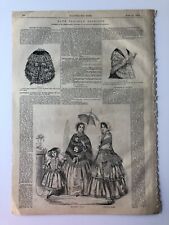
1853 Illustrated News Antique Print Recent Paris Fashions #113018 $9.95
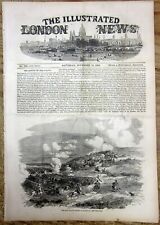
1853 illustrated newspaper w THE CHARGE OF THE LIGHT BRIGADE during CRIMEAN WAR $40.00
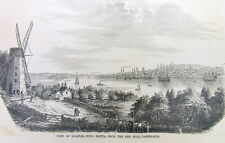
1853 illustrated newspaper w View & description Early HALIFAX Nova Scotia CANADA $15.00

1853 illustrated newspaper View & Descript YALE UNIVERSITY New Haven CONNECTICUT $25.00
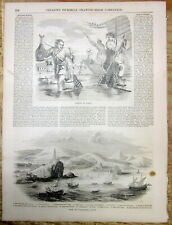
1853 illustrated newspaper with 2 early illustrated views & description of JAPAN $15.00
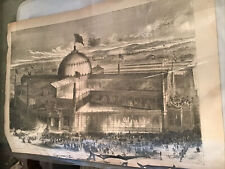
Bird’s Eyes View of the Crystal Palace at New York July 23, 1853 Illustrated Sup $45.00
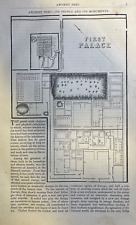
1853 Palaces and Monuments of Ancient Peru illustrated $27.99
|